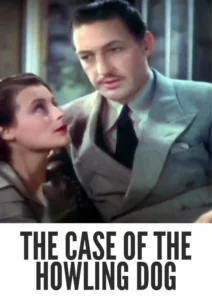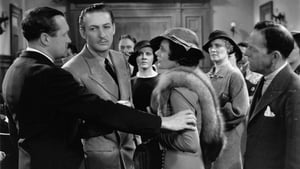Video Sources 0 Views

Synopsis
Barking Mad Mystery: The Case of the Howling Dog (1934) in Stunning Color

Step into the thrilling world of early Perry Mason with The Case of the Howling Dog, a captivating courtroom mystery from 1934, now beautifully colorized for a viewing experience like never before. Starring Warren William as the charismatic lawyer Perry Mason, this film delivers a blend of suspense, legal drama, and canine capers. Perfect for fans of classic mysteries and those seeking a taste of early Perry Mason adaptations, this HD download brings a thrilling piece of legal history to your screen.
The Case of the Howling Dog Storyline: A Barking Good Mystery
The Case of the Howling Dog follows the brilliant criminal defense lawyer Perry Mason as he gets entangled in a bizarre case involving a howling dog, a disputed will, and a potential murder. When a man seeks Mason’s help to draft a will that includes a provision for his beloved dog, Mason senses something is amiss.As Mason investigates, he uncovers a complex web of family secrets, hidden motives, and potential foul play. The howling dog becomes an unlikely key to unlocking the truth behind a series of mysterious events. With the help of his loyal secretary Della Street, Mason navigates a treacherous legal landscape to defend his client and expose the real killer. The film culminates in a dramatic courtroom showdown, where Mason uses his sharp wit and legal expertise to unravel the mystery and bring justice to light. Ultimately, The Case of the Howling Dog is an entertaining and clever mystery that showcases the early adventures of one of literature’s most iconic lawyers.
Movie Cast
The film features a talented cast of actors who bring this suspenseful story to life:
- Warren William as Perry Mason
- Mary Astor as Bessie Foley
- Grant Mitchell as Arthur Cartright
- Helen Trenholme as Francine Richetti
- Allen Jenkins as Spudsy Drake
Movie Genre
The Case of the Howling Dog falls into the genre of courtroom mystery, with elements of legal drama and suspense that are characteristic of the early Perry Mason adaptations. Its intricate plot and engaging characters make it a captivating and entertaining film.
Historical Context: Early Perry Mason and Pre-Code Cinema
Released in 1934, The Case of the Howling Dog represents an early adaptation of Erle Stanley Gardner’s popular Perry Mason novels, showcasing the character’s initial transition to the silver screen. The film was produced during the Pre-Code era of Hollywood, a period known for its risqué themes and unconventional storytelling. While The Case of the Howling Dog may not be as daring as some of its Pre-Code counterparts, it offers valuable insights into the era’s cinematic trends and the early evolution of a literary icon.
Colorization Details
This colorized version of The Case of the Howling Dog has been meticulously restored using modern digital techniques, enhancing the visual appeal while preserving the film’s original atmosphere of mystery and suspense. The colorization process involved carefully analyzing the grayscale tones of the original black and white footage and assigning appropriate colors to each scene. While the specific software used remains proprietary, the techniques employed included advanced algorithms for color palette selection and image enhancement. This painstaking process brings new life to the characters and settings, making the story even more engaging for modern audiences. While some may debate the merits of colorizing classic films, it introduces these films to a broader audience, ensuring their legacy for future generations.
Technical Details
- Director: Alan Crosland
- Screenplay: Ben Markson
- Based on: the novel by Erle Stanley Gardner
- Cinematography: William Rees
- Edited by: Thomas Pratt
- Production Company: Warner Bros.
- Distributed by: Warner Bros.
- Runtime: 75 minutes
Technical Specifications
- Download Format: MP4
- Resolution: HD (1080p)
- Compatibility: Compatible with most devices, including smartphones, tablets, computers, and smart TVs.
Reviews and Critical Reception
The Case of the Howling Dog (1934) is often seen as a faithful adaptation of Erle Stanley Gardner’s novel, offering an early glimpse into the world of Perry Mason. While it may not be considered a cinematic masterpiece, it remains an entertaining and engaging example of early courtroom mysteries and a valuable piece for Perry Mason enthusiasts. As a relatively well-received film in the series, The Case of the Howling Dog provides a unique perspective on the formative years of a literary and cinematic icon.
FAQs
- Q: What is The Case of the Howling Dog about?
- A: The Case of the Howling Dog is a courtroom mystery about Perry Mason’s involvement in a bizarre case involving a dog, a will, and a potential murder.
- Q: Is The Case of the Howling Dog (1934) a well-known Perry Mason film?
- A: The Case of the Howling Dog is one of the earlier and better-known Perry Mason films, offering a glimpse into his early cases.
- Q: Is this version of The Case of the Howling Dog colorized?
- A: Yes, this version has been professionally colorized to enhance the viewing experience.
- Q: What makes The Case of the Howling Dog interesting for Perry Mason fans?
- A: The Case of the Howling Dog offers valuable insights into Perry Mason’s early career, showcasing his developing skills in legal deduction and courtroom strategy.
- Q: What is the download format?
- A: The download format is MP4, which is compatible with most devices.
- Q: What resolution is the download?
- A: The resolution is HD (1080p), providing a high-quality viewing experience.
Download Now in HD!
Watch The Case of the Howling Dog Today!











